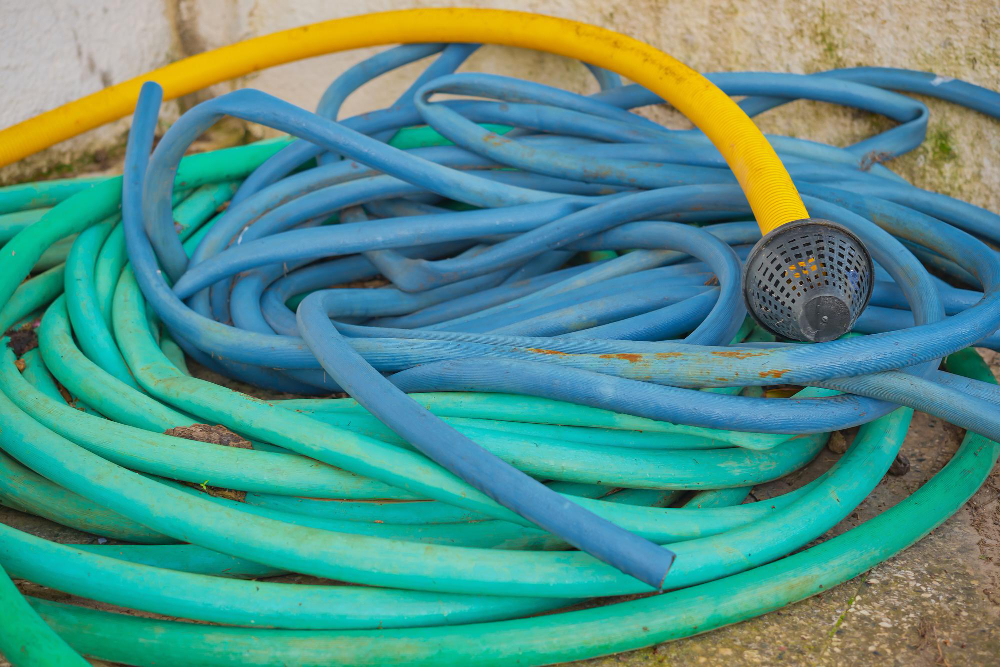
Durability in garden hoses is a critical factor that often goes overlooked until the moment a hose kinks, leaks, or bursts, turning what should be a peaceful gardening session into a frustrating ordeal.
When it comes to selecting a garden hose that will stand the test of time, several key features should be considered to ensure you’re making a wise investment. This article will delve into what makes a garden hose durable, covering materials, construction, flexibility, and additional features to look for.
Understanding the Materials
The first step in choosing a durable garden hose is understanding the materials from which they are made. Garden hoses are typically constructed from one of three materials: vinyl, rubber, or a combination of both, known as reinforced hoses.
- Vinyl Hoses are lightweight and the most economical option. They’re suitable for mild weather and light watering tasks but tend to kink more easily and are less durable than their counterparts.
- Rubber Hoses are heavier, more robust, and resistant to kinks and abrasions. They can withstand harsh weather conditions, from scorching summers to freezing winters, without cracking or deteriorating. The downside? They’re more expensive and heavier to maneuver.
- Reinforced Hoses incorporate a mesh layer between layers of vinyl or rubber, offering enhanced durability and resistance to kinking and bursting. They strike a balance between the lightweight flexibility of vinyl and the sturdy resilience of rubber.
Analyzing the Design
The construction of a garden hose significantly impacts its durability. Look for hoses with a double-layered design or reinforced walls. These features increase resistance to pressure and prevent the hose from bursting under high water pressure.
Additionally, hoses with solid brass fittings are preferable over plastic ones, as brass is more resistant to wear, corrosion, and provides a tighter seal to prevent leaks.
Flexibility Versus Kink Resistance
A durable garden hose must be flexible enough to maneuver around corners and obstacles without kinking, as kinks can weaken the hose over time and lead to failures. Some hoses are marketed as kink-free, featuring a special design or material composition that prevents them from twisting. While no hose is entirely kink-proof, those with a higher ply (the number of layers a hose has) or reinforced with a spiral mesh are less likely to kink.
UV Resistance and Weather Tolerance
Exposure to sunlight and varying weather conditions can degrade garden hoses, causing them to become brittle and crack. Look for hoses that are UV-stabilized or have a rubber coating to protect against sun damage. Additionally, hoses that can tolerate a wide range of temperatures offer greater durability, especially if you live in an area with extreme weather conditions.
Extra Features for Enhanced Durability
- Expandable Hoses: These hoses are made from materials that expand when filled with water and retract when empty, making them lightweight and easy to store. However, their durability varies widely, so it’s essential to look for models with strong outer fabric and solid fittings.
- Non-Toxic Materials: For those using hoses for drinking water or filling pet bowls, consider hoses labeled as lead-free and drinking water safe. These hoses are made from materials that won’t leach harmful chemicals.
- Warranty: Manufacturers confident in the durability of their hoses often offer extended warranties. A long warranty period can serve as a good indicator of a hose’s quality and durability.
Conclusion
Investing in a durable garden hose requires careful consideration of materials, construction, flexibility, and additional features that enhance longevity. By prioritizing hoses made from high-quality materials, with robust construction, and designed to withstand the elements and usage demands, gardeners can ensure their watering tasks are efficient, enjoyable, and free from the hassle of frequent hose replacements. Remember, a durable garden hose not only saves money in the long run but also contributes to a more sustainable gardening practice by reducing waste.
